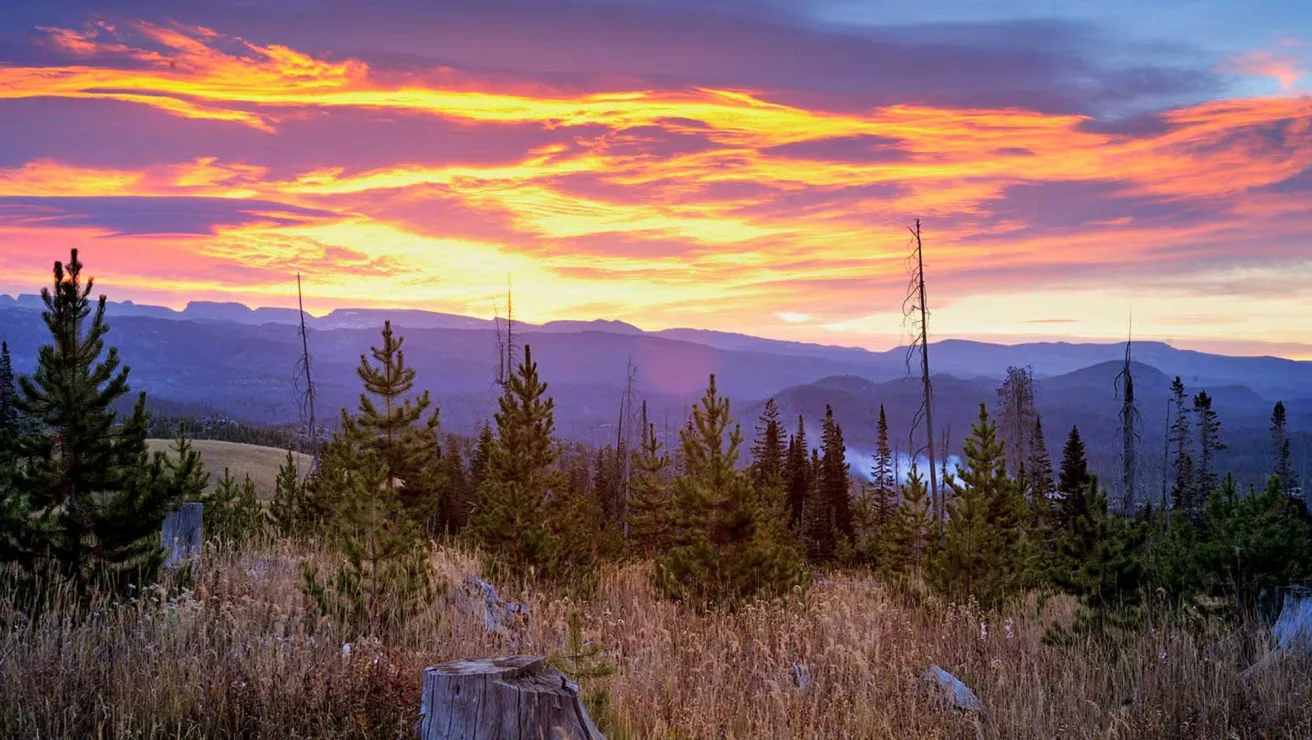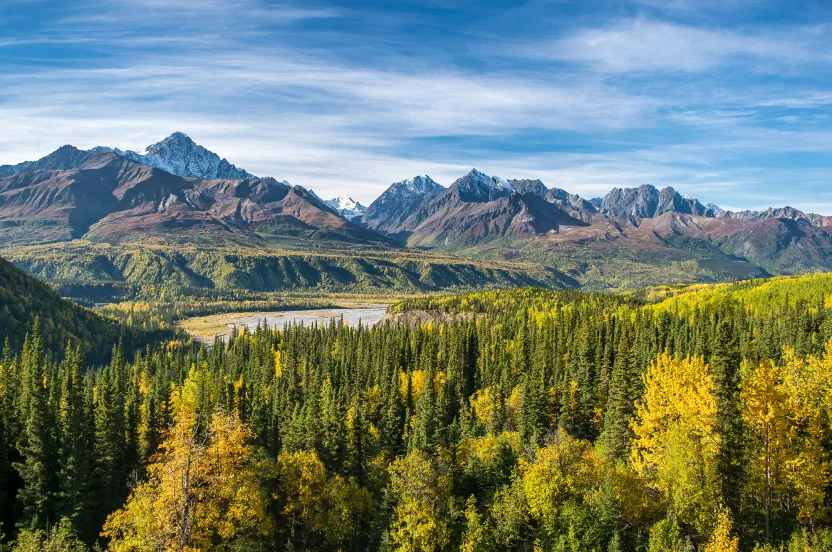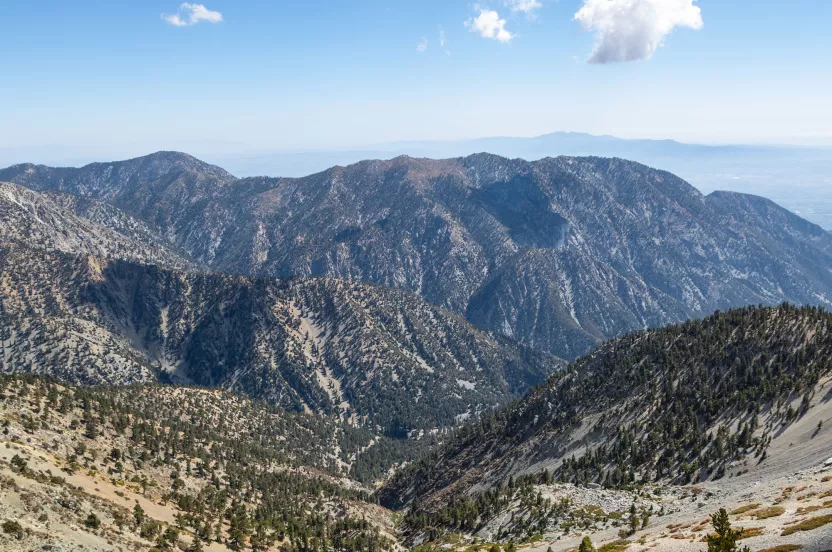Now live: The 2025 Canopy Report. Learn how Americans see trees. GET THE REPORT
The Fire That Sparked A Movement
In 1988, Yellowstone erupted in flames. The devastation paved the way for a global reforestation effort.
July 14, 2023

It started slowly. Just one lightning strike in a remote location — forests survive them every day.
Then another, and another, and another.
Before long, one of America’s most beloved national parks was consumed by flames.
It was June 1988, and Yellowstone was experiencing the beginnings of what would become the worst fire in the history of the park. A historically dry summer had set the stage for the destruction — and soon, 45 fires were blazing within its borders.
“For much of the summer, you could almost see the particles of the smoke — the sky was so dark,” said Karen Houser, a former employee of the Arbor Day Foundation who was working in Yellowstone at the time.
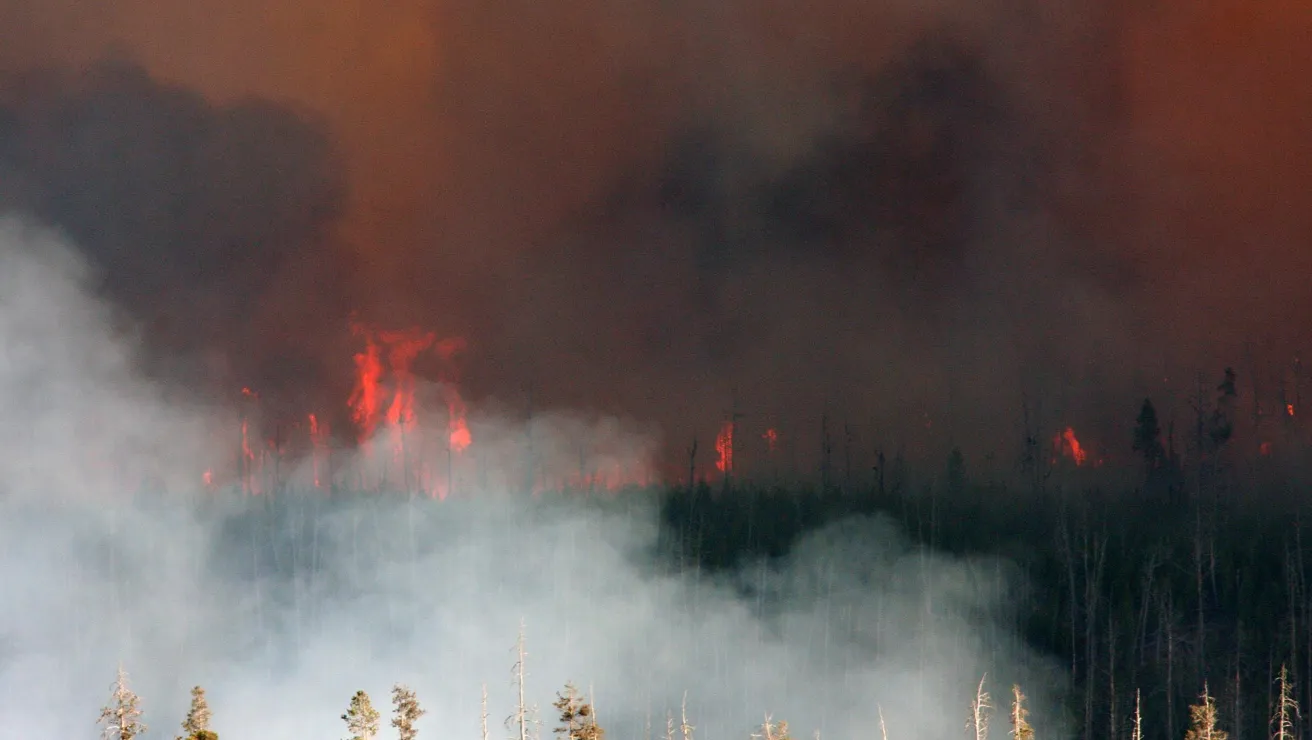
More than 25,000 firefighters were brought in to fight the inferno. Media coverage was so frenzied that many members of the public believed the park had burned completely to the ground.
By September, snow and rain extinguished the last of the blaze. But the damage left behind was daunting. Roughly 800,000 of the park’s acres — a third of its land — was burned. Across the region, 1.2 million acres had been scorched.
Rising from the ashes
“It wasn't just Yellowstone. It was also the surrounding Yellowstone area. Gallatin National Forest is on the north side of the park, and it was heavily affected,” said Brad Brandt, senior program manager at the Arbor Day Foundation.
“Somebody here at the Foundation wanted to see if we could help fundraise to get trees back in the ground. They reached out to the Forest Service and made that connection, and it took about a year and a half to two years to raise the money,” he added.
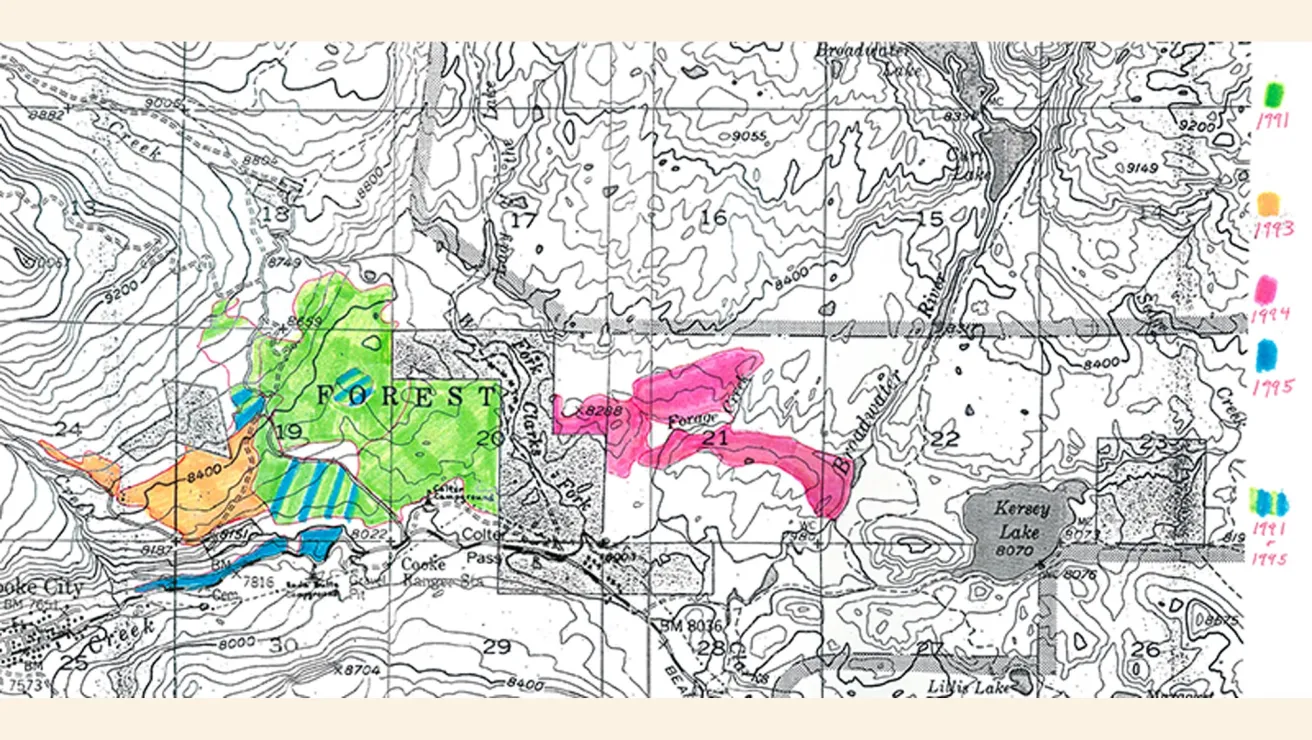
From the archives: A map from the Forest Service shows where Arbor Day Foundation trees were planted in Gallatin National Forest.
At the time, funding public reforestation projects with private, outside dollars wasn’t very commonplace. Such work was usually completed with the Forest Service’s limited budget. And the Foundation’s main focus was sending trees to its members — much more residential than rural.
The Yellowstone Fires changed all that. Donations to the Foundation poured in from supporters across the country who had watched the harrowing coverage on the news and felt compelled to help.
Those contributions were then sent to the Forest Service, allowing them to grow and plant their first new seedlings in Gallatin National Forest post-fire.
The recovery work began in the spring of 1990, when more than 125,000 white park, Douglas fir, and lodgepole pine trees were planted across the forest’s burn scar. Each seedling was planted by hand.
This partnership continued for the next decade, until eventually, 1.3 million new trees covered the land.
“We could not have the planting program we have without the Arbor Day Foundation and its members. It is their contributions, large and small, that make this happen. This can’t be overstated,” said Stan Cook, a forester who led the restoration efforts in Gallatin, in a previous interview about the project.
“That was the beginning of a beautiful friendship,” Brandt said.
180 million trees and counting
Since that first reforestation project, the Foundation has gone on to fund the planting of more than 50 million trees with the Forest Service. The program has expanded to other entities, like private landowners, state forests, and nature preserves.
It’s expanded into international territory, too. The first reforestation project outside of the U.S. began in 2008, and today, new trees are being planted in more than 50 countries. 180 million have been planted altogether.
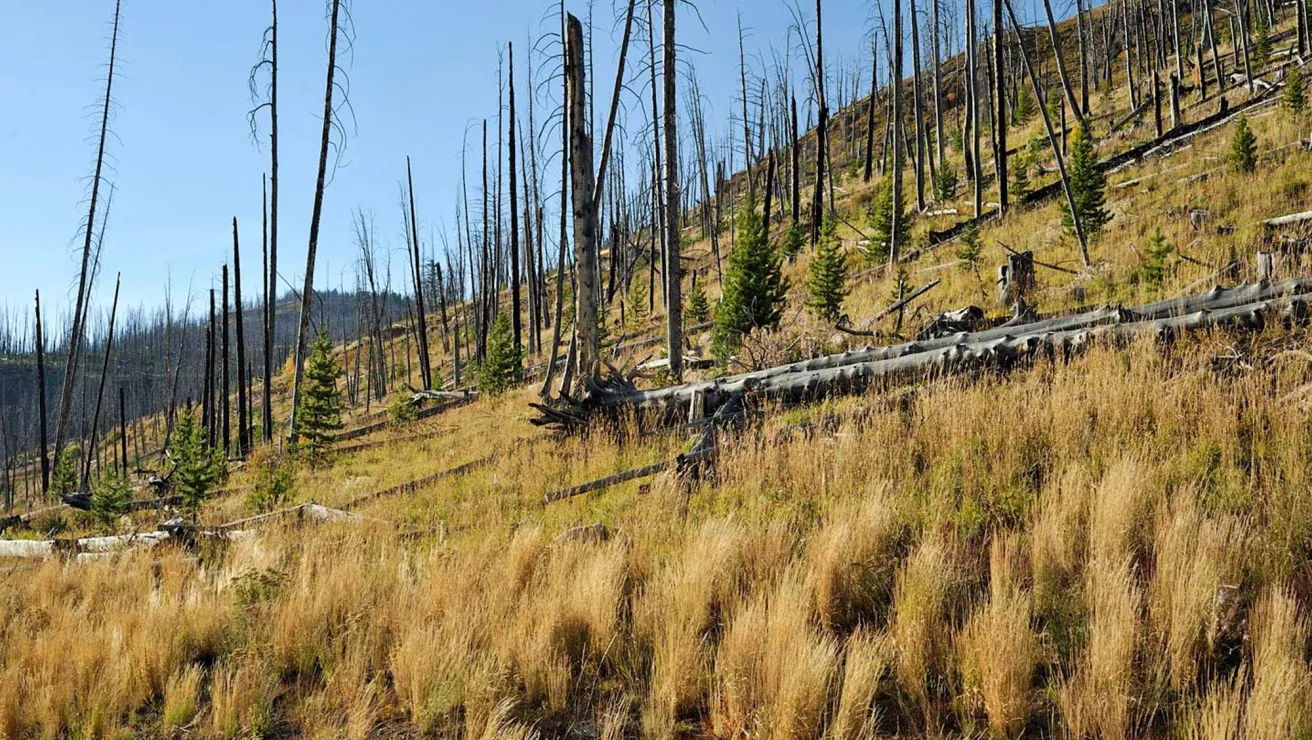
And though so much has changed since 1990, western states continue to need our assistance. Since 1988, the most active fire year for Yellowstone was 2016. 2020 was the West’s worst wildfire season on record.
“When the Yellowstone fires hit, it was almost a signaling of what was to come over the next 30 to 40 years,” said Brandt, who has managed the Foundation’s reforestation program since 2008. “There’s a fire regime people in the West have to live with now. Fire seasons are longer. They’re more intense. And there’s a lot more money being invested in preventing and managing them.”
The West’s urgent need for help, combined with continued momentum to save it, is why the Foundation recently named it a global priority region.
Meanwhile, high above the forest floor, satellite images from NASA tell the story of Yellowstone’s remarkable healing journey.
Courtesy | NASA
Showing that together, we can make an impact that’s seen from space.


